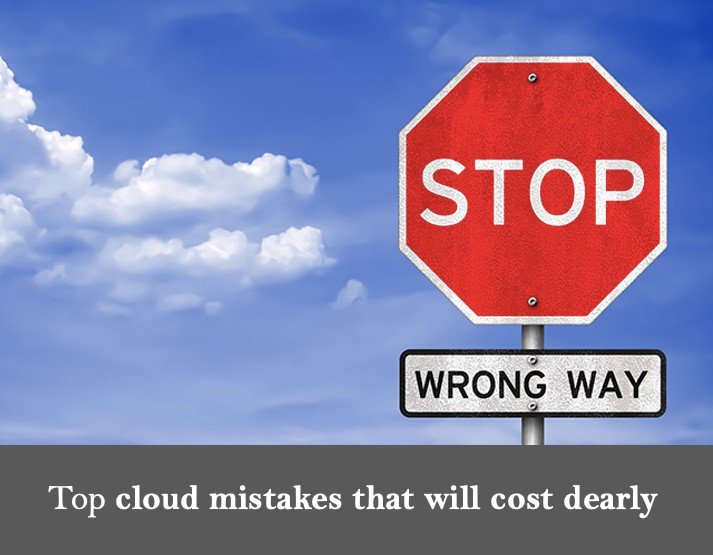Cloud computing, whether public or private, is leveraged across industries, BFSI, Retail, Manufacturing, Media, and Entertainment, among others. We are witnessing organizations jumping to the cloud bandwagon at record speed, although the adoption varies from industry to industry. However, many businesses still commit mistakes, which costs them dearly if not done right while adopting cloud technology.
What are the main cloud mistakes to avoid for a successful migration?
1. Inaccurate estimation of cloud infrastructure needs
IT teams have always believed in providing around 20% additional infrastructure capacity on-premise. They use a similar estimation methodology to predict future cloud consumption based on the existing infrastructure and resources. However, this does not provide accurate information on the current usage and the nature of workloads. For a cloud infrastructure to run at its total capacity, only the right sizing of workloads will bear the expected Return on Investment. Resources usage should be kept in check to avoid overspending.
2. Role-based and restricted access is overlooked
Organizations often fail to limit access to classified and sensitive information to authorized employees. This may cause unnecessary data loss that could be misused by employees unintentionally or on purpose, leading to a negative impact on the brand. Moreover, cloud storage can be accessed from anywhere remotely, putting sensitive data at risk. Therefore, businesses have to put strict access control measures in place to avoid data leakage.
3. Moving all applications to the cloud without assessing the need
Some organizations shift the entire existing infrastructure and services to the cloud in one go, which is a common mistake committed. It is important to note that all business applications are unsuitable for cloud migration. All data do not meet the criteria for the ‘lift and shift’ strategy. Some applications may be working on legacy technology stacks, and others could be very complex and not suitable for cloud.
The cloud migration strategy should include performing a detailed analysis of data and applications that can be shifted, and considering moving low-impact applications to the cloud is recommended.
4. Security issues in cloud computing cannot be left unaddressed
As more data and applications are stored in cloud, this also increases the attack surface of cloud clusters. Although there is growing awareness about cloud security aspects, several security issues are often not anticipated.
While designing a cloud security strategy, critical aspects, such as data breaches, account hijacking, unauthorized access, data loss, vulnerabilities of applications and systems, and security compliance, must be considered; the implications caused due to security failure is enormous, and organizations cannot afford to overlook cloud security aspects at all.
5. Neglecting cleaning of data before migration
Organizations have data accumulated and stored over a considerably long period of time that may not be relevant or of use anymore. If not carefully looked into before migration, such irrelevant files will occupy extra space on the cloud incurring costs. By tidying up the data before migration, organizations can avoid paying to maintain the ‘electronic garbage’ on cloud.
6. Due diligence aspect cannot be ignored
Businesses often fail to thoroughly research the cloud technology and the cloud services provider before partnering with them. The IT team within the organization must study the migration and usage requirements and determine which cloud provider is best suitable for the task. Several discussions between the team and potential providers can set the right expectations at the outset. New possibilities of the cloud infrastructure can also be explored for better Return on Investment and competitiveness.
These are among the many costly mistakes we witness organizations committing while opting for cloud migration. By avoiding them before cloud adoption, businesses can enjoy the benefits, and the journey to cloud can be exciting!
[Also Read: Best Practices To Revamp Your Cloud Migration Strategy]
To get the latest insights, research and expert articles on AWS Services, Cloud Migration, DevOps and other technologies, subscribe to our Blog Newsletter here. For AWS Case studies and success stories, visit Case Study Section




